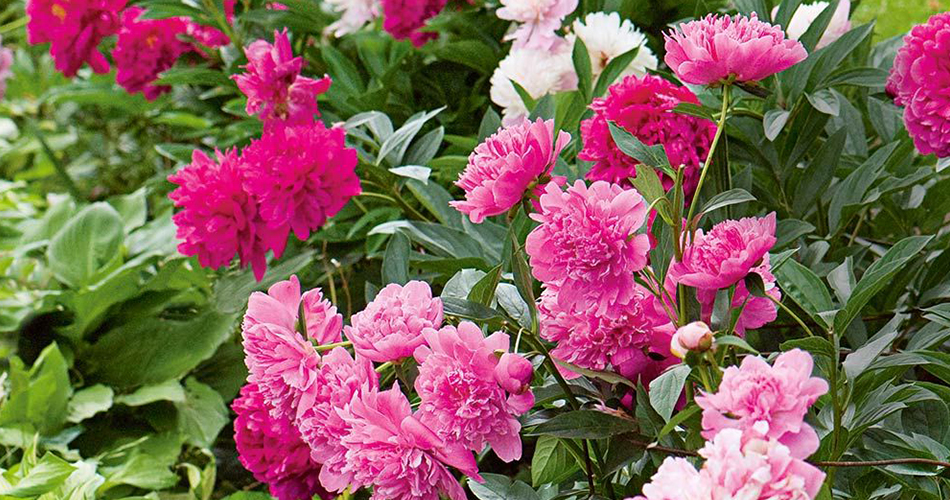Peony (pe’one). Peonies belong to the buttercup family and are among the oldest of garden flowers. They have been cultivated in China for more than 2,000 years. In early times their roots were used for food and in medicines, but they were prized, then as now, for their beautiful flowers. Wild ancestors of garden peonies grew in China, parts of Europe, and Asia Minor. From them have come thousands of varieties. Most peony flowers are white or shades of pink or red. A few are yellow. The blossoms may measure eight or more inches across. Several types are known, ranging from single flowers with few petals to ball-shaped double blossoms. In northern United States they bloom in May and June. They make excellent cut flowers, and the bushy plants are attractive all summer. Peonies are very hardy, and live without winter protection throughout the United States. Except for the tree peonies (which have woody stems), the plants die down in autumn. Gardeners usually cut the stems close to the ground.
New plants are started by dividing large clumps or are grown from seed. Plants usually are set out or moved in the fall. They grow best in rich, well-drained soil with plenty of sunlight. Once well started, plants will keep growing for many years. For this reason peonies have been called the “lifetime flowers”.


Be First to Comment